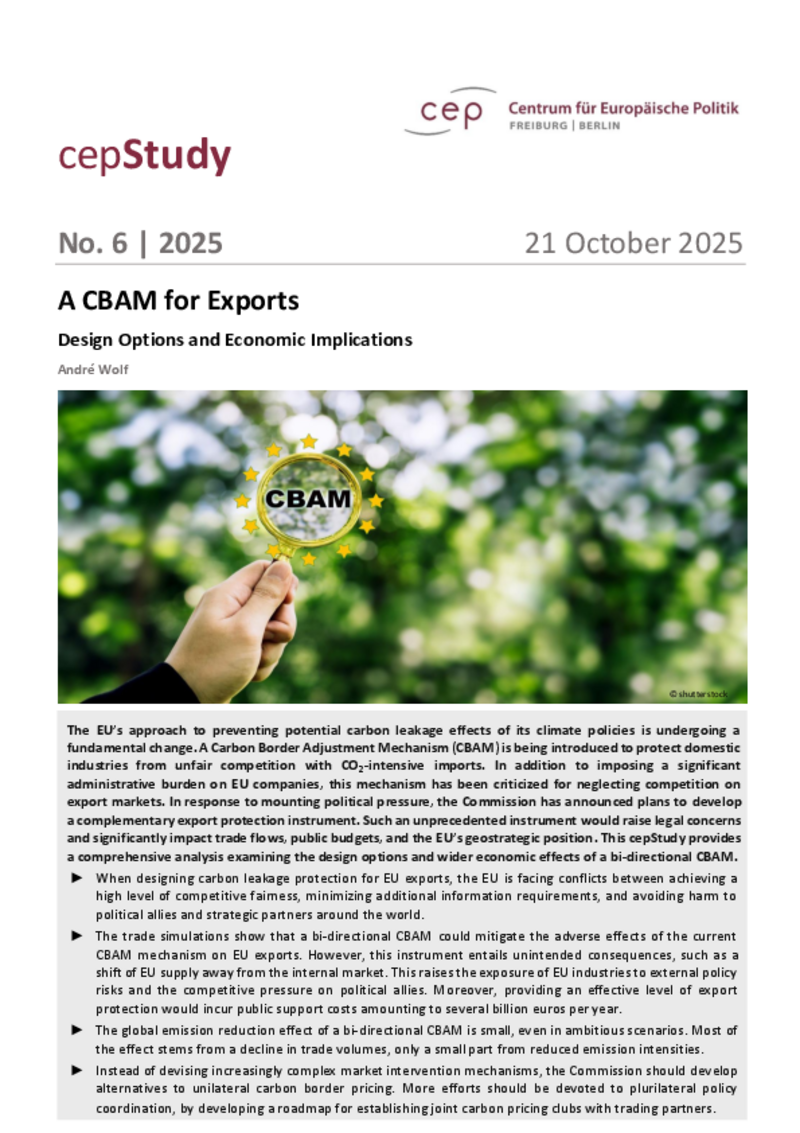
Climate
A CBAM for Exports
cepStudy
The increasing CO₂ cost burden jeopardises the competitiveness of emission-intensive EU industries and risks carbon leakage. Until now, the EU has been issuing free emission allowances to prevent relocation effects. With the "Fit for 55" package, the EU has decided to introduce a CO₂ border adjustment mechanism (CBAM) which, in order to protect EU industry, imposes a surcharge on imports of a range of products such as steel and aluminium from countries without comparable CO₂ pricing. At the same time, the free allocation of emission allowances to domestic manufacturers of these products is being phased out. This means that, in future, EU exports to third countries will be subject to CO₂ costs without a corresponding protection mechanism for exports. The EU Commission has promised to remedy this situation in the near future.
"A CO₂ border adjustment for exports could offset the cost disadvantages for EU industry, but the price would be high: risky distortions in international trade and billions in subsidy costs, with only minimal global emission reductions," says cep economist André Wolf, who authored the study. One of the undesirable side effects would be a shift in the sales markets of domestic manufacturers to non-European regions. This would increase vulnerability to external political risks and damage the economies of the EU's strategic partners, especially neighbouring countries in the Balkan region.
The necessary annual compensation payments would in any case amount to several billion euros and would continue to rise from year to year as the global CO₂ price range increases. This would be offset only by a small benefit in the form of global emission savings. According to Wolf, this could also be torpedoed by political backlash from third countries.
Given the complexity and potential side effects of a bilateral CBAM, Wolf recommends focusing carbon leakage measures on international cooperation. Instead of developing increasingly complex market intervention mechanisms, the EU should establish climate clubs together with its trading partners. These could not only define basic rules for CO₂ pricing, but also open up growth prospects for green technologies by creating joint lead markets.
Download PDF
| A CBAM for Exports (publ. 10.21.2025) | 1 MB | Download | |
 | |||



